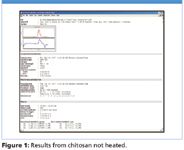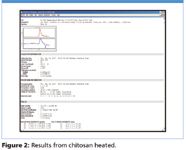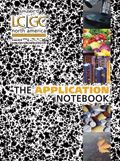Effect of Heating on Molecular Weights of Chitosan
Heating is a common and essential requirement in most biopharmaceutical production methods. Chitosan is an amino polysaccharide obtained by alkaline deacetylation of naturally abundant chitin. It is known as a potentially beneficial material in many pharmaceutical applications such as tissue engineering, drug delivery, cell encapsulation, and medical devices.
Heating is a common and essential requirement in most biopharmaceutical production methods. Chitosan is an amino polysaccharide obtained by alkaline deacetylation of naturally abundant chitin. It is known as a potentially beneficial material in many pharmaceutical applications such as tissue engineering, drug delivery, cell encapsulation, and medical devices. In this study, we investigated the effect of high-temperature heating on chitosan molecular weights, the most important characteristic of chitosan.
In this study, a GPC-MALS system was used to determine molecular weight. The system employs a Shimadzu Solvent Delivery System. The solvent (0.2 M acetic acid/0.1 M sodium acetate) was filtered and degassed through 0.22 μm nylon filter under vacuum and delivered to the system. The flow rate was set to be 0.5 ml/min.

Figure 1
Waters Ultrahydrogel 250 and Ultrahydrogel 2000 with the separation range from 103 to 8 × 104 and from 50 × 104 to 7 × 106 kDa respectively were used. The columns were located in a Shimadzu column oven. System temperature was set to be 35 °C. Chitosan solution samples were diluted to a concentration of 2 mg/ml using the solvent, then filtered through 0.2 μm PVDF filters and injected into the GPC columns with a manual Rheodyne syringe injector equipped with a 100 μl sample loop.
Two detectors included the Wyatt Optilab (AUX1) and a Shimadzu UV-Vis Detector (AUX2) operated at 280 nm. The Wyatt DAWN EOS (Enhanced Optical System).
A value of 0.180 ml/g was used for the refractive index increment (dn/dc). The data were collected and analyzed by the ASTRA software. The molecular weight of nontreated chitosan was found to be (1.44 ± 0.009) × 105 g/mol. Chitosan which was heated at 85 °C in an oven for 9 h had a molecular weight of (7.903 ± 0.038) × 104 g/mol.

Figure 2
High temperature heating, therefore, caused the decrease in the molecular weight of chitosan.
This note was graciously submitted by Hang Thu Ta, Department of Chemical and Biomolecular Engineering, The University of Melbourne, Australia.

Wyatt Technology Corporation
6300 Hollister Avenue, Santa Barbara, CA 93117
tel. (805)681-9009; fax (805)681-0123
Website: www.wyatt.com

SEC-MALS of Antibody Therapeutics—A Robust Method for In-Depth Sample Characterization
June 1st 2022Monoclonal antibodies (mAbs) are effective therapeutics for cancers, auto-immune diseases, viral infections, and other diseases. Recent developments in antibody therapeutics aim to add more specific binding regions (bi- and multi-specificity) to increase their effectiveness and/or to downsize the molecule to the specific binding regions (for example, scFv or Fab fragment) to achieve better penetration of the tissue. As the molecule gets more complex, the possible high and low molecular weight (H/LMW) impurities become more complex, too. In order to accurately analyze the various species, more advanced detection than ultraviolet (UV) is required to characterize a mAb sample.














